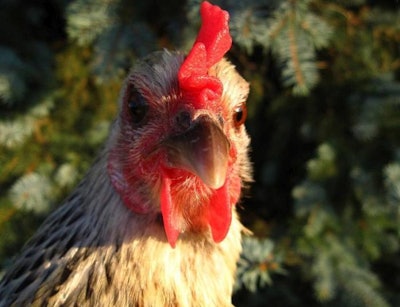
The U.S. Department of Agriculture (USDA) is proposing stricter animal welfare rules for organic livestock that would have significant impacts for organic poultry growers.
On April 7, the USDA’s Agricultural Marketing Service released a proposed rule calling for all livestock raised as part of its National Organic Program (NOP) be given space to lay down, turn around, stand up, fully stretch their limbs without touching other animals or sides of the enclosure, and otherwise express natural behaviors. The 181-page proposed rule, available in full online, would establish new rules for the housing, transportation and slaughter of organic poultry.

In a call to organic stakeholders, Miles McEvoy, deputy administrator for the NOP, said the proposed rule would require:
- Year-round access to an outdoor area that is at least 50 percent soil cover. Roofed areas attached to houses would not be considered outdoors.
- Natural light to permeate through poultry housing on sunny days.
- Poultry houses with slatted or mesh floors to provide at least 30 percent solid floor and sufficient litter space for dust bathing.
- Stocking densities allowing for a maximum of 2.25 to 4.5 pounds of hen per square foot of indoor space, depending on the housing type. At least 2 square feet per bird is recommended.
- Access to “enrichment” in the outdoor area to encourage birds to use the space. Outdoor space must allow for 2.25 pounds of hen per square foot, or about 2 square feet per bird.
- Group housing for all swine, except for boars. All exercise areas must permit rooting. Sows may be housed individually at farrowing and during the suckling period. Piglets shall not be kept on flat decks or piglet cages.
- All livestock must be fit and well enough for transportation and slaughter. Sick, injured, weak, disabled, blind or lame animals must not be transported for sale or slaughter. Livestock trailers must provide season-appropriate ventilation to protect against the stress of cold and heat. Bedding must be provided on trailer floors and holding pens. Water and organic feed must be provided if transportation and holding times exceed 12 hours.
McEvoy said the proposed rule not change the USDA’s allowance for temporary confinement as a biosecurity measure. The agency’s Animal and Plant Health Inspection Service (APHIS) has determined the proposal won’t negatively impact biosecurity efforts.
If published as a final rule, all provisions of the new rule must be implemented – except for outdoor space requirements for poultry – within a year. Three years after publication, all new poultry operations and poultry houses must comply with the outdoor space requirements. Within five years, all organic-certified poultry operations must comply with outdoor access.
“Because different livestock and poultry management systems have different costs, particularly those with significantly different levels of outdoor access, stakeholders have expressed concern that the current inconsistencies create an uneven playing field for organic livestock and poultry producers,” McEvoy said on the conference call. “These modifications will support the continued expansion of the organic livestock and poultry industry, while increasing organic integrity, and meeting consumer expectations.”
Although the organic retail market is now valued at more than $39 billion annually, organic animal products – meat, dairy and eggs – make up about 2 percent of total organic food sales. Consumer demand for organic products continues to grow, however, and the market has increased by 12 percent between 2014 and 2015, according to the USDA.
In a statement, Laura Batcha, CEO of the Organic Trade Association, commended the proposed rule.
“Animal welfare has always been a high priority of organic producers,” Batcha said in a statement. “Ensuring that the high expectations consumers have for organic foods are met preserves the organic seal’s reputation as the gold standard for agricultural production practices. OTA is pleased that USDA is moving forward.”
Once the proposal is published in the federal register, the public will be invited to comment for the next 60 days. The AMS will host a webinar providing a public overview of the proposed rule at 2:30 p.m. Eastern Daylight Time on April 15.
















